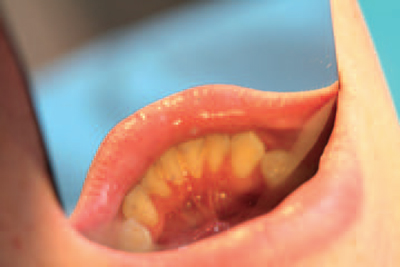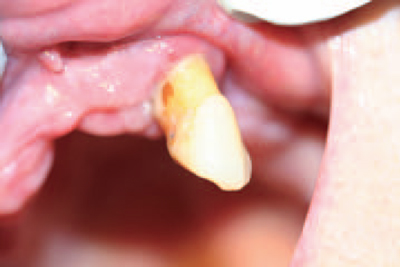SECTION 3
SCALING AND POLISHING

REASON FOR PROCEDURE
Everyone’s mouth contains a variety of bacteria, some of which react with saliva and the food that is eaten to produce a sticky film, called plaque. Plaque forms wherever food debris becomes lodged in the mouth, usually along the gum margin and in areas that are difficult to clean, called stagnation areas.
Plaque lying along the gum margin will irritate the soft tissue and eventually cause inflammation of the gum, or gingivitis. Regular toothbrushing and interdental cleaning by the patient will remove the plaque and prevent this from happening.
However, if the plaque is not removed, it gradually hardens by absorbing minerals from the patient’s saliva and becomes calculus (tartar). Calculus cannot be removed by toothbrushing alone, and the dentist or hygienist will need to remove it by scaling the teeth.
If the calculus is left untouched, it gradually forms further and further down the side of the tooth root as the gum tissue is destroyed, and eventually the supporting structures of the tooth (the jaw bone and periodontal ligaments) are also destroyed and the tooth becomes loose in its socket. This is called periodontal disease, or periodontitis (see Figure 3.1).
Figure 3.1 Periodontal disease

The more advanced the damage to the periodontal tissues, the more difficult it is for the dentist to treat, and the more likely that long-term problems, including tooth loss, will occur.
The procedures to be discussed are:
- Scaling
- Polishing
SCALING
Background information of procedure
The dentist or hygienist can scale a patient’s teeth using hand instruments or electric scalers, or a combination of both. The aim of the procedure is to remove all the calculus from around each tooth, so that the supporting structures are no />
Stay updated, free dental videos. Join our Telegram channel

VIDEdental - Online dental courses


